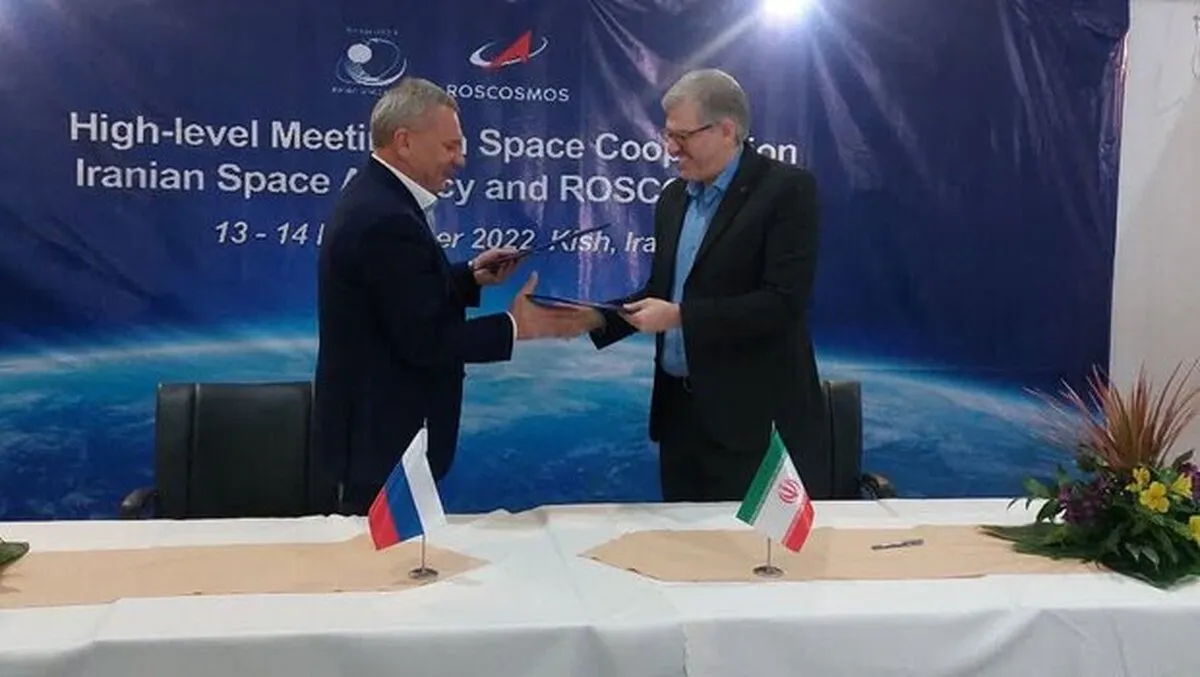Iran, Russia Ink Agreement for Cooperation in Space Industry

Head of the Iranian Space Agency Hassan Salarieh and Head of Russia's space agency Yury Borisov signed the deal on the sidelines of an International Aerospace Exhibition on Kish Island in the Persian Gulf.
The cooperation document includes a variety of topics, including cooperation in the construction of remote sensing and telecommunication satellites and the creation of laboratory infrastructures for assembly, launch and testing of satellites.
َ A sum of 90 companies from Iran, Russia, China, and Ethiopia etc., are participating in the space exhibition which started on December 13 and wrapped up on December 16.
Visiting the exhibition, Borisov said that Russia has valuable experience in the advanced space industry and is ready to exchange these experiences with Iran.
He added that the launch of Khayyam satellite in August is a joint experience for Iran and Russia in the development of space cooperation and it will lead to more interactions between the two countries in the future.
"The exhibition is a great opportunity to get to know and present the technological and space achievements of Russia," Borisov said.
Iran is among the 10 countries with the know-how of space technology and is the 11th country in the world in terms of space science and the leading country in the region.
Iran’s global ranking in space technology has improved from 95 in 1996 to 11 in 2017.
Salarieh announced in November that Iran is planning to launch Nahid-1 satellite into space by using the Qaem-100 satellite launch vehicles (SLV) in the near future.
“The stages of designing and manufacturing of Nahid-1 satellite have been completed and all related tests have been conducted successfully. This national satellite is in the stage of being put into the orbit and it will be launched into the space on the back of Qa’em-100 satellite carrier in the next few months,” Salarieh said.
He added that Nahid-1 satellite is a telecommunication satellite that can receive and send data in the KU band and has a high capability in controlling the situation.
“The capacity of knowledge-based companies is used in designing and construction of the Nahid-1 satellite as well as all other satellite projects,” Salarieh underlined.
Earlier in November, Iran successfully launched the solid-fueled rocket named Qa’em-100 satellite carrier which is able to put a satellite weighing 80 kg into orbit some 500 kilometers away from the Earth.
Iran launched its first satellite, called Omid (literally meaning hope), in 2009. Rasad (literally meaning observation) satellite was also sent into orbit in 2011.
In 2012, Iran successfully put its third domestically manufactured satellite, named Navid (literally meaning promise), into orbit.
The first and most advanced homegrown remote-sensing satellite is Pars-1, which has been designed and constructed by the researchers of the Iranian Space Research Center.
Pars-1 is supposed to take pictures of all parts of the country using a high-resolution 15-meter-camera and send its photos from a 500-kilometer distance to the earth stations using a high-powered telecommunication transceiver.
According to previous reports, the Iranian Space Agency has plans to launch a number of satellites including Pars-1, Pars-2, Zafar-2, and Nahid-2.
In February, the Iranian Space Agency announced that the Kosar satellite, designed and launched by 8 technological companies, was scheduled to be in a 500-kilometer orbit by the current [Iranian calendar] year (which began on March 21).
4155/v





















